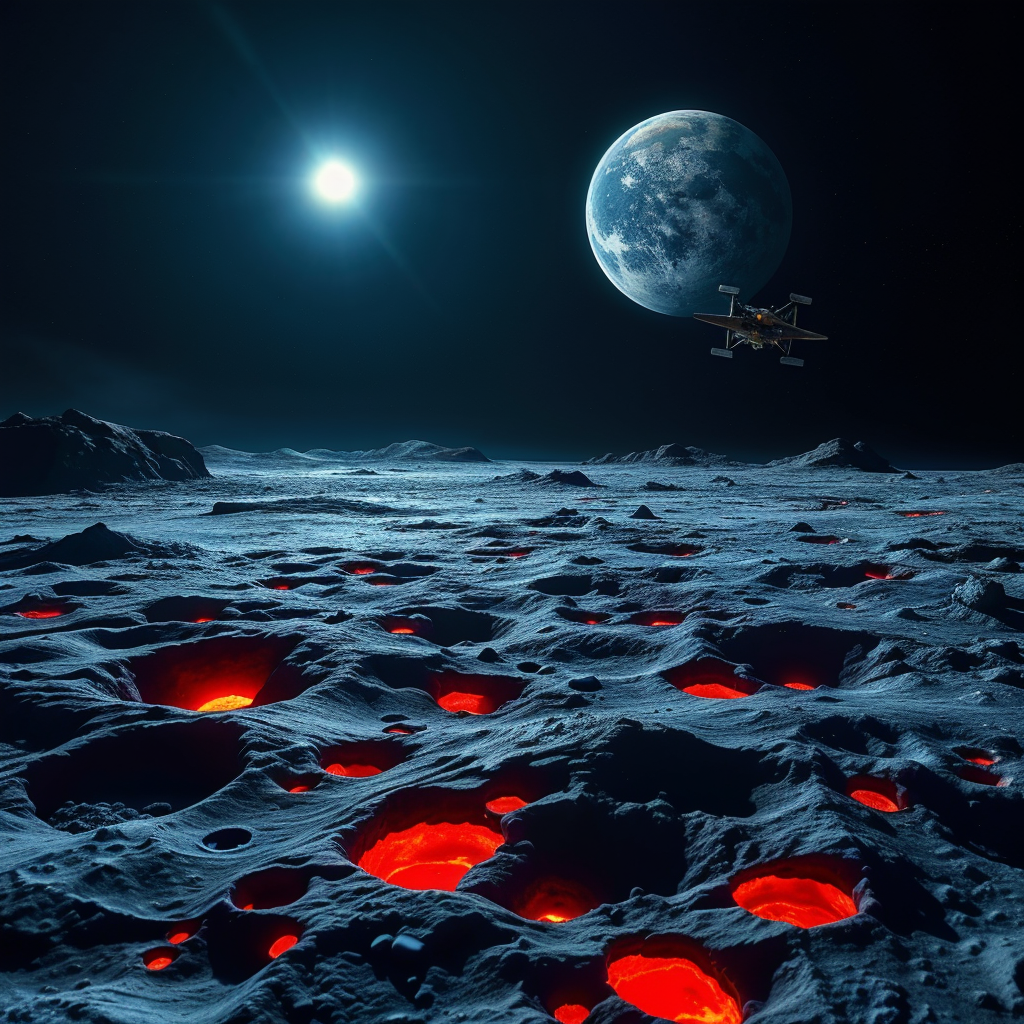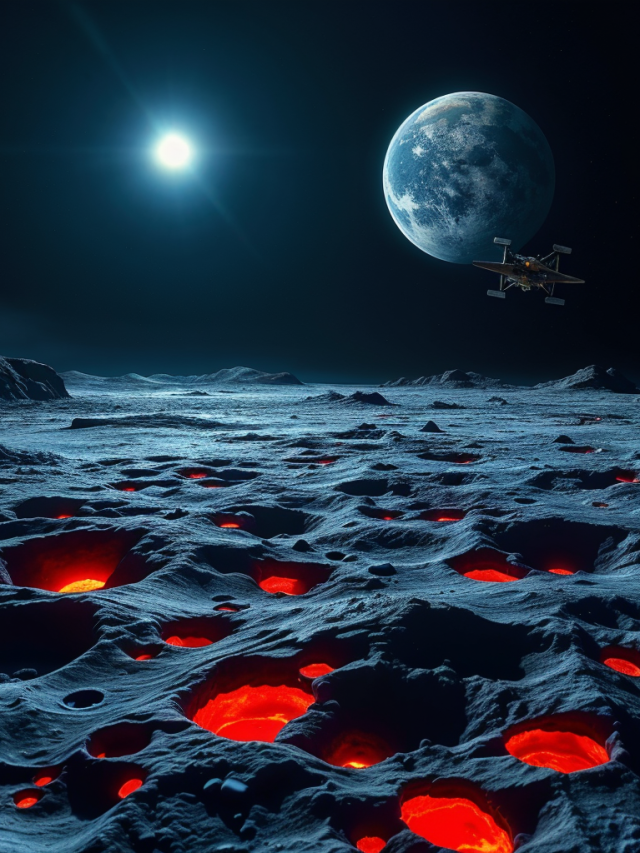The Discovery of Moon’s Magma Ocean: What Chandrayaan-3 discovers

Have you ever wondered what the Moon is really made of? It turns out, our closest celestial neighbour has been hiding a fiery secret deep beneath its surface. Thanks to India’s Chandrayaan-3 mission, we now know that the Moon once had an ancient ocean of magma. This discovery is like finding a hidden treasure chest full of clues about the Moon’s mysterious past.
What Did Chandrayaan-3 Discover ?
The Chandrayaan-3 mission, launched by the Indian Space Research Organisation (ISRO), was designed to explore the Moon in greater detail than ever before. Its main goal was to study the lunar surface and reveal hidden features that could tell us more about the Moon’s history. As the spacecraft orbited the Moon and collected data, it made a surprising discovery: evidence of an ancient magma ocean beneath the lunar surface!
This magma ocean wasn’t just a small, fiery puddle. It was a vast, molten sea that once covered a significant portion of the Moon. Scientists believe that this ocean existed billions of years ago, during the early days of the Moon’s formation. Over time, the magma cooled and solidified, forming the rocky crust that we see today.
How Was the Magma Ocean Discovered ?
You might be wondering, how can scientists discover something as ancient and hidden as a magma ocean? The secret lies in the advanced technology carried by Chandrayaan-3. The spacecraft was equipped with special instruments designed to study the Moon’s surface and subsurface layers. These instruments used techniques like radar and spectrometry to detect variations in the Moon’s composition.
By analyzing the data collected by Chandrayaan-3, scientists were able to identify unique patterns in the lunar rocks that suggested the presence of ancient magma. These patterns, known as “igneous signatures,” are the fingerprints of volcanic activity that occurred billions of years ago. The discovery of these signatures provided strong evidence that the Moon’s surface was once covered by a vast ocean of magma.
Why Did the Moon Have a Magma Ocean ?
To understand why the Moon had a magma ocean, we need to travel back in time to when the Moon was first formed. Scientists believe that the Moon was created after a massive collision between Earth and a Mars-sized object. The impact generated enormous amounts of heat, causing the Moon’s surface to melt into a sea of magma.
As this molten rock gradually cooled, it began to solidify and form the layers of the Moon’s crust. The heaviest materials sank to the bottom, while lighter materials floated to the top, creating the lunar surface that we see today. This process of cooling and solidification took millions of years, and it left behind traces of the ancient magma ocean that scientists are now uncovering.
What Does This Discovery Tell Us About the Moon ?
The discovery of an ancient magma ocean on the Moon is more than just a cool fact—it’s a key to understanding the Moon’s entire geophysical history. By studying the formation and cooling of this magma ocean, scientists can learn more about how the Moon evolved over billions of years. This knowledge also helps us understand similar processes on other moons and planets in our solar system.
One important aspect of this discovery is what it reveals about the Moon’s volcanic history. The presence of a magma ocean suggests that the Moon was once much more geologically active than it is today. Volcanic activity on the Moon would have played a crucial role in shaping its surface, creating the craters, mountains, and valleys that we see today.
What Are the Implications for Future Lunar Exploration ?
The discovery of the Moon’s ancient magma ocean has exciting implications for future lunar exploration. Now that we know more about the Moon’s volcanic past, scientists can plan new missions to explore these ancient features in greater detail. Future missions might involve sending landers or rovers to specific regions of the Moon where the magma ocean’s influence is most visible. This could also help us prepare for future human exploration of the Moon, as understanding its geological history is key to safely navigating and utilizing its resources.
Conclusion
The discovery of an ancient magma ocean on the Moon by Chandrayaan-3 is a groundbreaking achievement that sheds light on the Moon’s fiery past. This discovery not only deepens our understanding of the Moon’s geophysical history but also opens up new avenues for exploration both on the Moon and beyond.
As we continue to study the Moon and explore its ancient features, we’ll uncover more secrets about how it—and other celestial bodies in our solar system—were formed. The journey of discovery is just beginning, and who knows what other mysteries lie hidden in the stars ?
So, next time you gaze up at the Moon, remember that it’s not just a distant, lifeless rock. It’s a world full of history, waiting to be explored. And thanks to missions like Chandrayaan-3, we’re one step closer to understanding the mysteries of our celestial neighbour.

